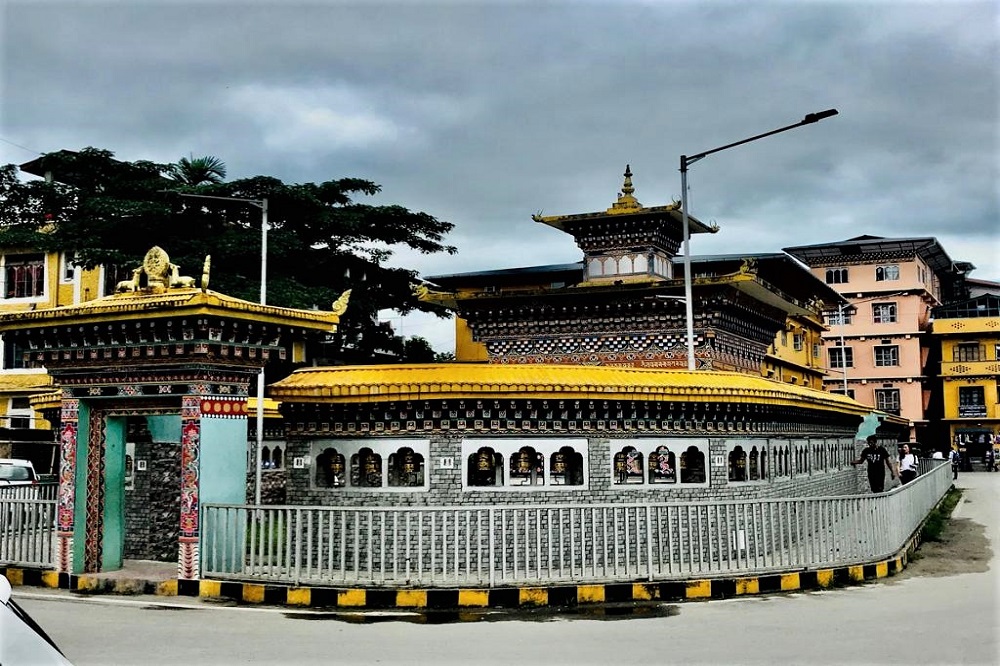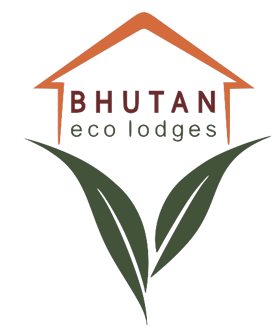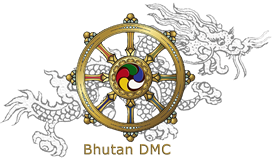Samdrup Jongkhar (altitude 240m.) – Eastern frontier town connecting Bhutan with Assam and other north-east Indian states

Located in south-eastern part of Bhutan, sharing its southern and northern borders with Indian state of Assam and Arunachal Pradesh respectively, Samdrup Jongkhar is an important gateway to the eastern region of Bhutan. To its west lies Pemagatshel district and to its north, Trashigang district of Bhutan.
The district of Samdrup Jongkhar is located in the sub-tropical climatic zone, extending from an elevation of 200m to 3600m with major portion of the land within 600m to 1200m.The temperature here ranges from a minimum 14 degree Celsius to a maximum of 36 degree Celsius during the peak summer month.
The district houses two major ethnic groups – the ‘Tshangla’ and the ‘Lhotshampa’ boththriving with different culture and traditions. This region is predominantly agrarian society and people grow here maize, rice, oranges, chillie, mandarin, potato and ginger.
Owing to its location, bordering Indian state of Assam, Samdrup Jongkhar is commercially important district due to cross border trade and also serves as business hub for five eastern districts of Bhutan namely, Pemagatshel, Trashigang, Trashiyangtse, Mongar and Lhuentse. The road from Trashigang to Samdrup Jongkhar was built in 1960s enabling the eastern part of the country to access and benefit from trade with the south as well as across the Indian border.
Places of Tourist Interest in Samdrup Jongkhar
Zangtho Pelri Lhakhang
Centrally located, the three-storied Zangtho Pelri temple refer to the celestial abode of Guru Rinpoche. Situated in the heart of the town, near weekend market, the temple was built in 1990s and serves as spiritual refuge for the locals.
Dewathang
Located 18km from Samdrup Jongkhar town, Dewathang literally means ‘flat area of happiness’. Dewathang, a town in south-east Bhutan is the site where Jigme Namgyal, the father of first King Ugyen Wangchuck led the Bhutanese troops in a final battle against the British in 1884. Though the Bhutanese put up a strong resistance against the British, Jigme Namgyal ultimately signed the treaty of Sinchula with the British in 1865.
The Chökyi Gyatso Institute (CGI) in Dewathang is unique in many ways, and started as a small temple built by Dzongsar Khyentse Rinpoche's maternal grandfather, the late Lama Sonam Zangpo. His great aspiration was for Khyentse Rinpoche to develop Dewathang into a ‘shedra’, a Buddhist college. In 1990, to fulfil his grandfather’s wish, Khyentse Rinpoche founded the CGI. Today, The CGI offers more than 140 monks a thorough education in Buddhist philosophy.
HOTELS IN THIMPHU
HOTELS IN PUNAKHA & WANGDUE
HOTELS IN GANGTEY
HOTELS IN TRONGSA
HOTELS IN BUMTHANG
HOTELS IN MONGAR
HOTELS IN TRASHIGANG
HOTELS IN SAMDRUP JONGKHAR
HOTELS IN PHUENTSHOLING
HOTELS IN HAA
HOTELS IN GELEPHU
HOTELS IN ZHEMGANG
RESTAURANTS IN PARO
RESTAURANTS IN THIMPHU
RESTAURANTS IN PUNAKHA
TOUR ITINERARIES
TREKKING ITINERARIES
SPECIAL INTERESTS TOURS
UNIQUE FESTIVALS & FAIRS
BLOG


